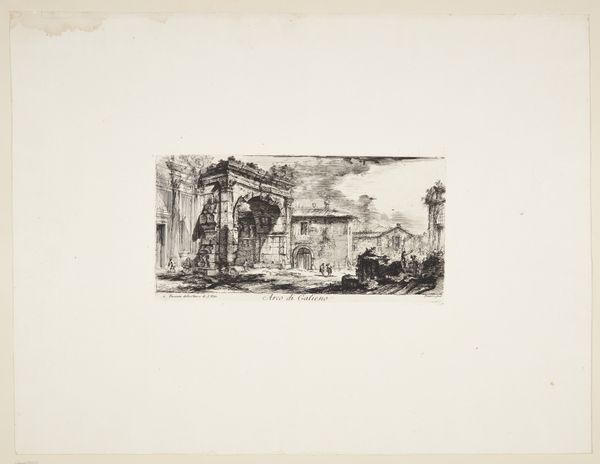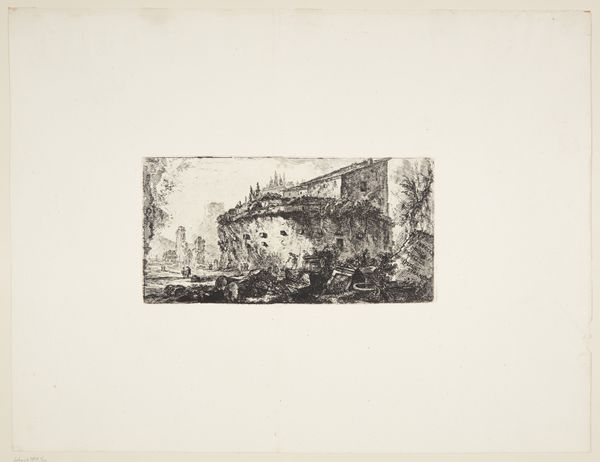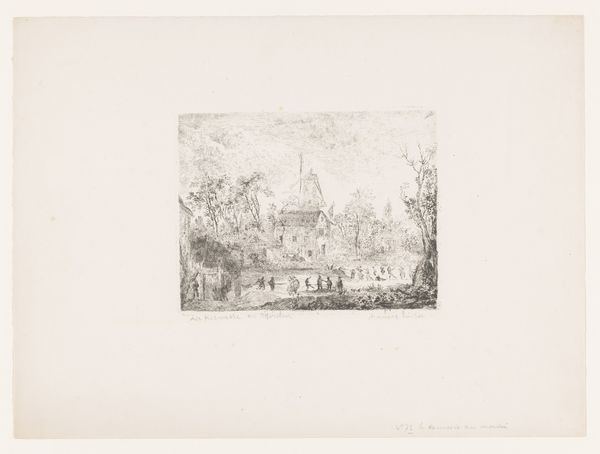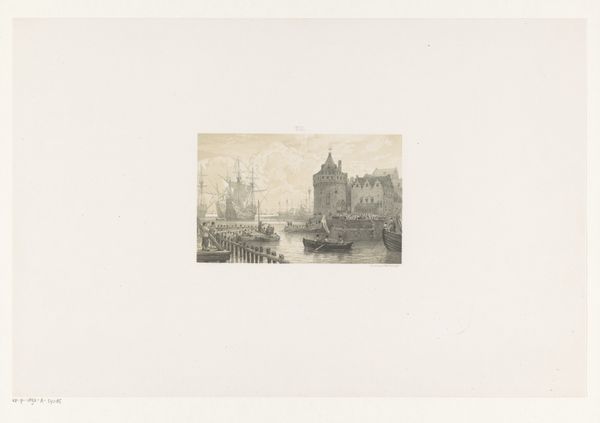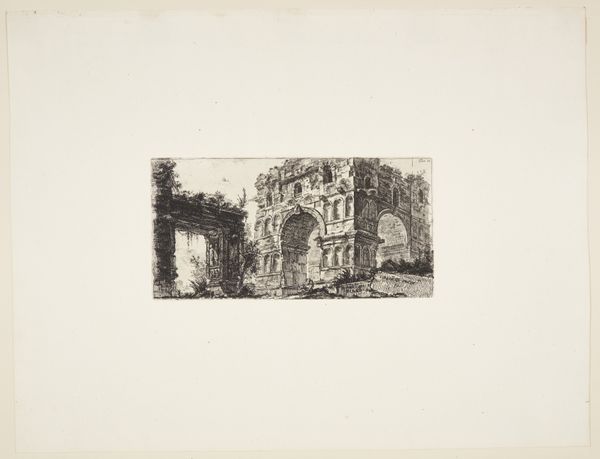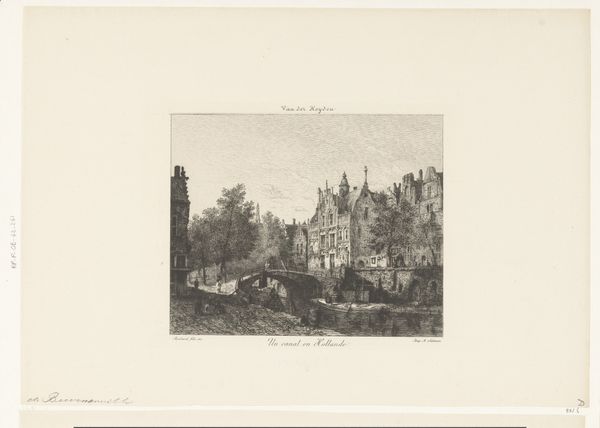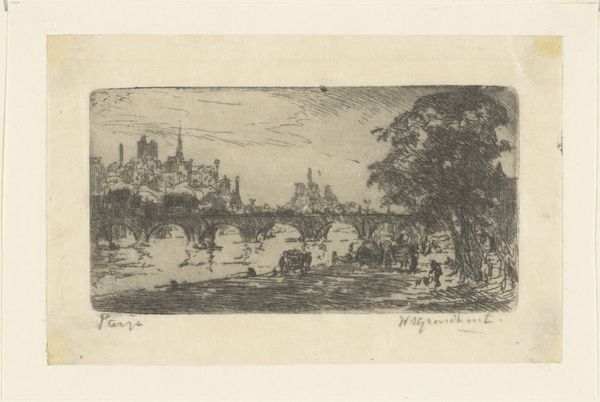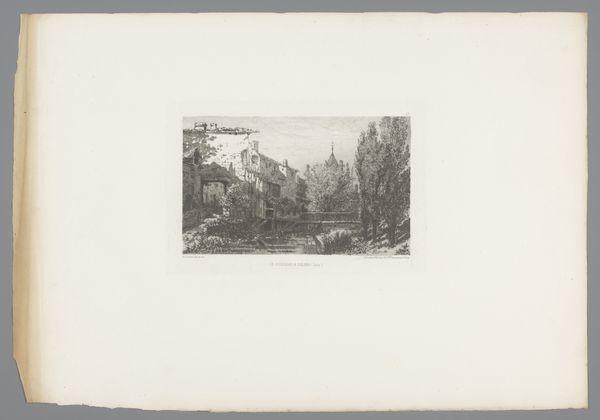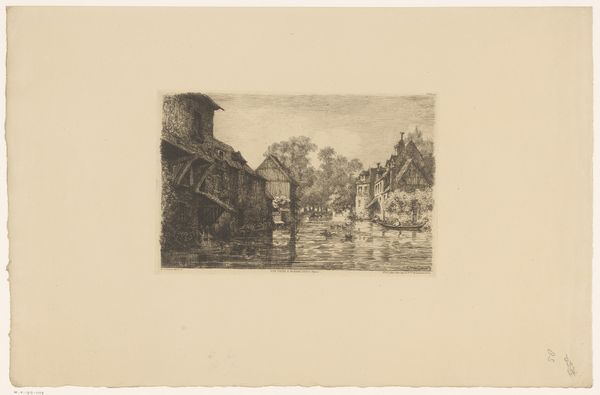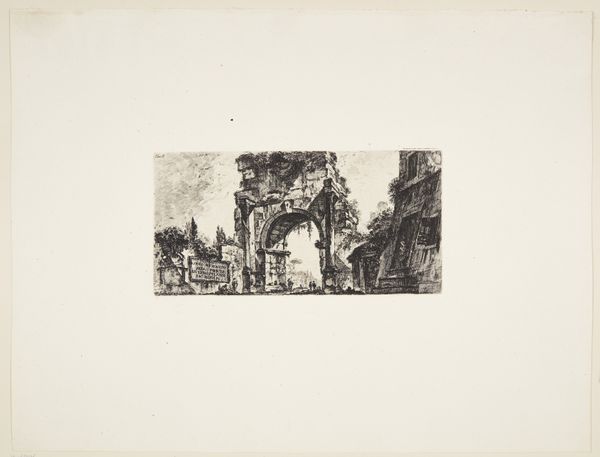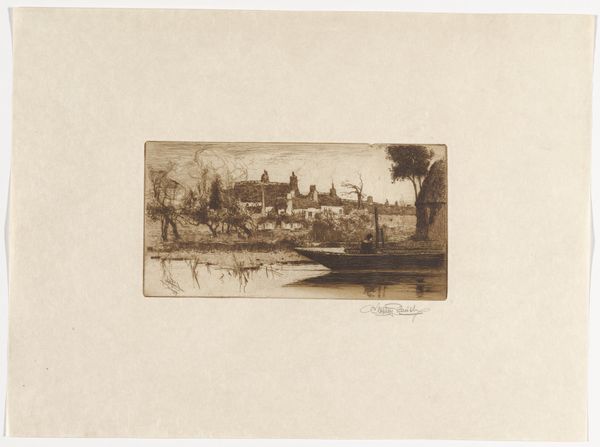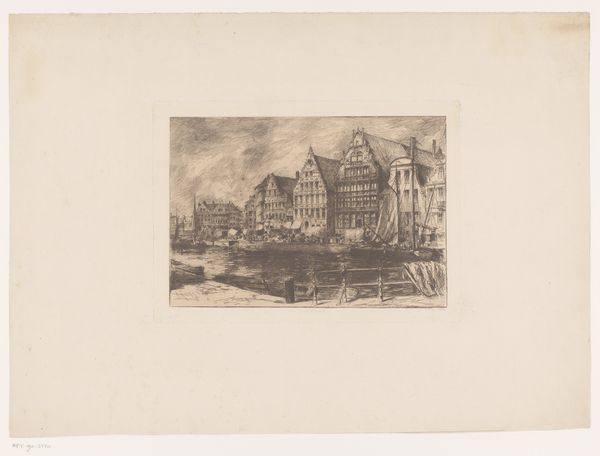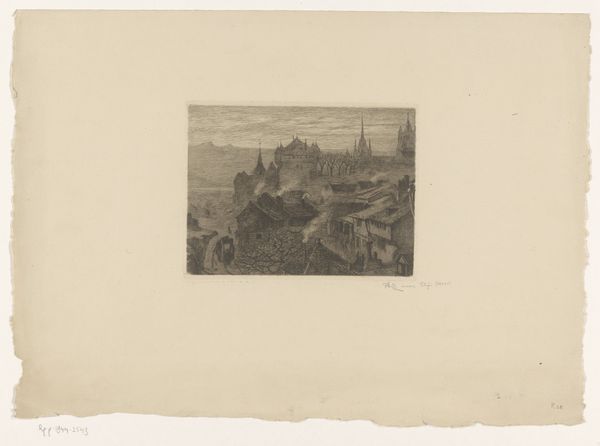
Part of the ancient Appian way about three miles outside the Porta San Sebastiano 1748
0:00
0:00
print, etching, engraving
# print
#
etching
#
landscape
#
line
#
cityscape
#
history-painting
#
engraving
Dimensions: 136 mm (height) x 271 mm (width) (plademaal)
Curator: This etching, created around 1748 by Giovanni Battista Piranesi, presents a scene titled "Part of the ancient Appian Way about three miles outside the Porta San Sebastiano." Editor: There's an immediate sense of decay and grandeur coexisting in this piece. The line work, though delicate, conveys the weight of history bearing down on these structures. Curator: Indeed. Piranesi employs etching and engraving to create a striking interplay of light and shadow, using line as structure, but also affect. Notice how the meticulous rendering of the architectural ruins contrasts with the more loosely defined human figures. This draws our attention to the buildings and to their spatial relations. Editor: The material reality of that decay is front and center, too. Think about the acidic process involved in etching and engraving--a chemical eroding process mirrored in the artwork by Piranesi--showing the wear and tear of centuries upon both the stones and the landscape through the act of its rendering. The artist seems really focused on making this historical ruin a character. Curator: Certainly, the physical creation and process behind this print speak to broader considerations. The high contrast reinforces the subject. The aquatint helps develop a certain moodiness too. It reinforces an interest in representing the architecture for what it is: heavy, ruined, monumental. Editor: Right. And those shadows that define form become metaphors. I imagine this view would have been more like a construction site for materials than any pretty vista, though, given its proximity to Rome and other industrial areas--it must've required great labor. It brings to the fore the less glamorous aspects of building or, as the case may be, dismantling buildings as monuments. Curator: A valid point. Piranesi is undeniably constructing something here through composition, not merely documenting something he observes. Editor: So, while it depicts decline, it seems intent on immortalizing those same means and materials for consumption, which carries its own social commentary. This piece reminds us of all the many different layers of how the present encounters history, material and artistic. Curator: An interesting juxtaposition of destruction and lasting materiality indeed. Thank you for this material perspective, this has offered a rich lens through which to view the work of Piranesi.
Comments
No comments
Be the first to comment and join the conversation on the ultimate creative platform.
